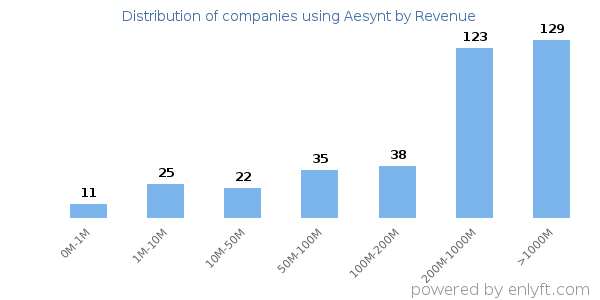Companies using Aesynt
We have data on 352 companies that use Aesynt. The companies using Aesynt are most often found in United States and in the Hospital & Health Care industry. Aesynt is most often used by companies with 1000-5000 employees and 200M-1000M dollars in revenue. Our data for Aesynt usage goes back as far as 8 years and 4 months.
Who uses Aesynt?
| Company | Impetus Technologies |
| Website | impetus.com |
| Country | United States |
| Revenue | 200M-1000M |
| Company Size | 1000-5000 |
| Company | HP Development Company, L.P. |
| Website | hp.com |
| Country | United States |
| Revenue | >1000M |
| Company Size | >10000 |
| Company | Change Healthcare Holdings, Inc. |
| Website | changehealthcare.com |
| Country | United States |
| Revenue | >1000M |
| Company Size | >10000 |
| Company | Medely |
| Website | medely.com |
| Country | United States |
| Revenue | 100M-200M |
| Company Size | 1000-5000 |
| Company | Cancer Treatment Centers of America |
| Website | cancercenter.com |
| Country | United States |
| Revenue | >1000M |
| Company Size | 5000-10000 |
| Company | Website | Country | Revenue | Company Size |
|---|---|---|---|---|
| Impetus Technologies | impetus.com | United States | 200M-1000M | 1000-5000 |
| HP Development Company, L.P. | hp.com | United States | >1000M | >10000 |
| Change Healthcare Holdings, Inc. | changehealthcare.com | United States | >1000M | >10000 |
| Medely | medely.com | United States | 100M-200M | 1000-5000 |
| Cancer Treatment Centers of America | cancercenter.com | United States | >1000M | 5000-10000 |
Target Aesynt customers to accomplish your sales and marketing goals.
Aesynt Market Share and Competitors in Healthcare
We use the best indexing techniques combined with advanced data science to monitor the market share of over 15,000 technology products, including Healthcare. By scanning billions of public documents, we are able to collect deep insights on every company, with over 100 data fields per company at an average. In the Healthcare category, Aesynt has a market share of about 0.2%. Other major and competing products in this category include:
Healthcare
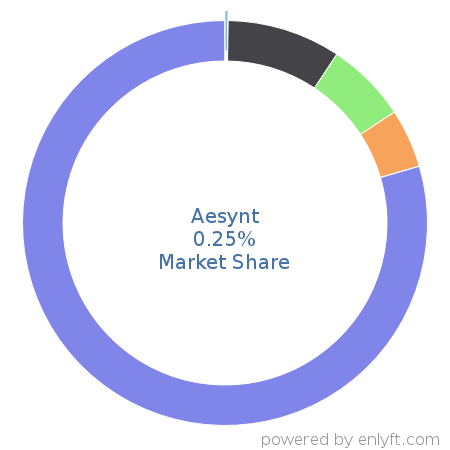

What is Aesynt?
Aesynt, is leading the journey to perfect medication management by pioneering a new path - one that optimizes both labor and drug expenses across the enterprise for all forms of medications, allowing our healthcare partners to dramatically reduce costs and improve patient safety.
Top Industries that use Aesynt
Looking at Aesynt customers by industry, we find that Hospital & Health Care (69%) is the largest segment.
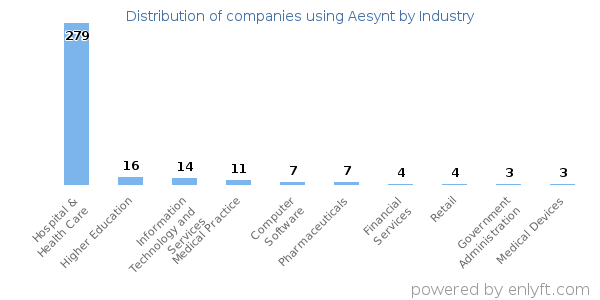
Top Countries that use Aesynt
90% of Aesynt customers are in United States.
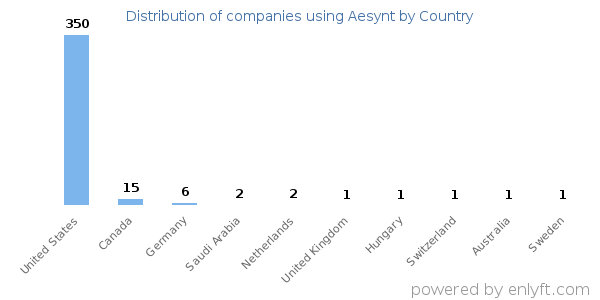
Distribution of companies that use Aesynt based on company size (Employees)
Of all the customers that are using Aesynt, a majority (69%) are large (>1000 employees), 8% are small (<50 employees) and 21% are medium-sized.
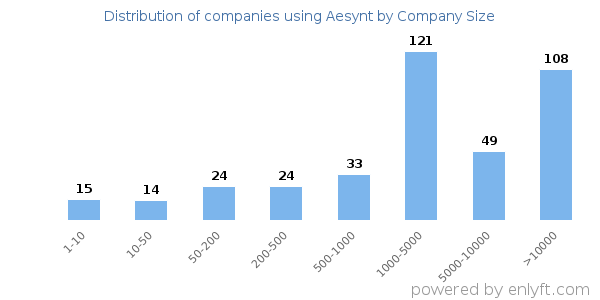
Distribution of companies that use Aesynt based on company size (Revenue)
Of all the customers that are using Aesynt, a majority (62%) are large (>$1000M), 15% are small (<$50M) and 17% are medium-sized.
